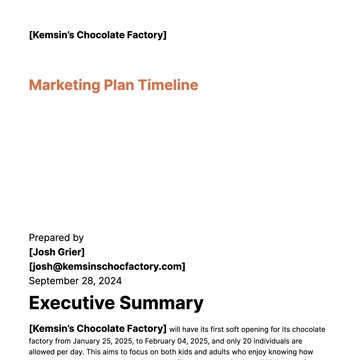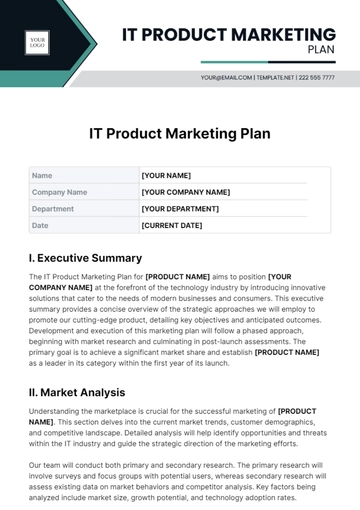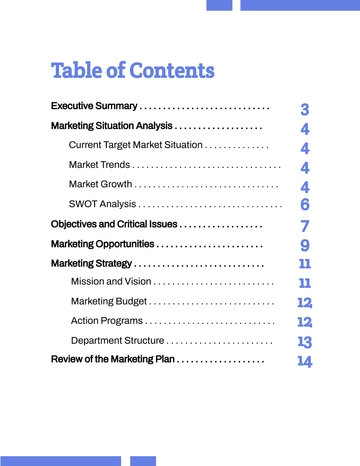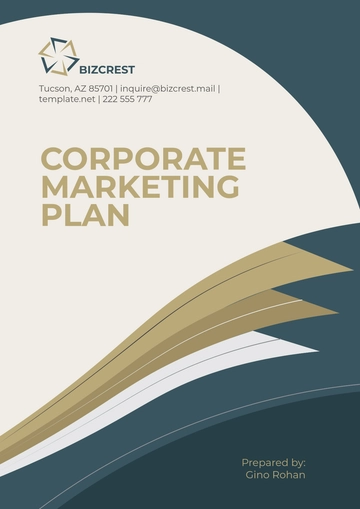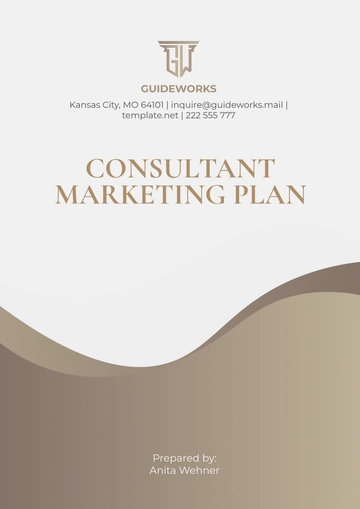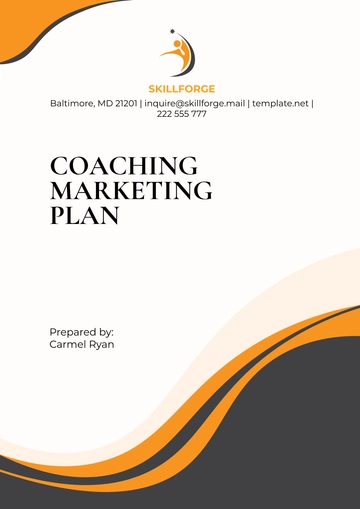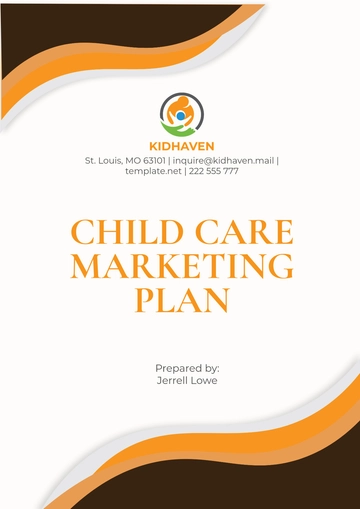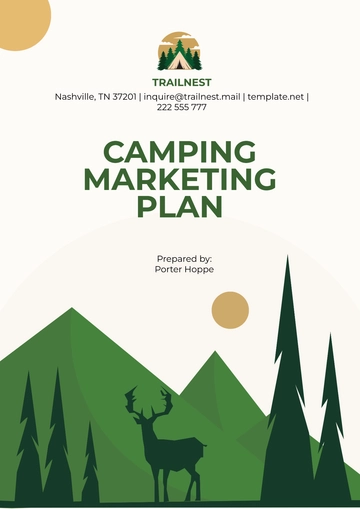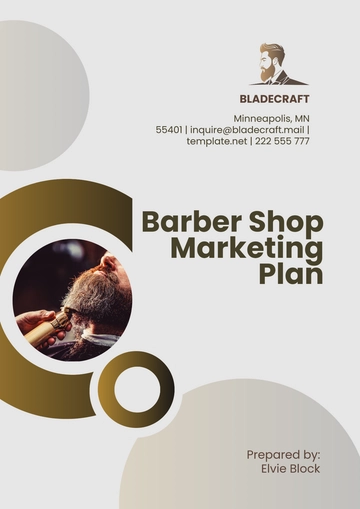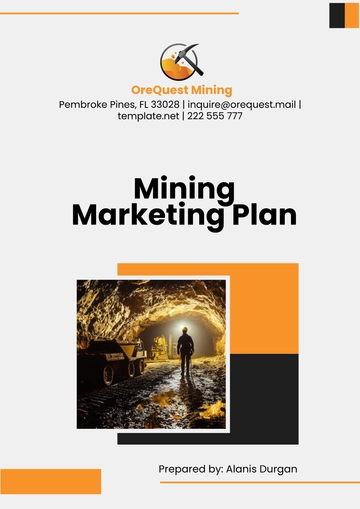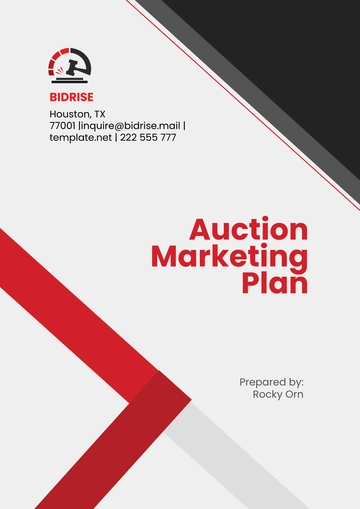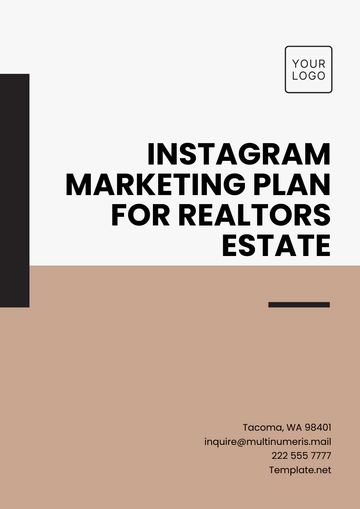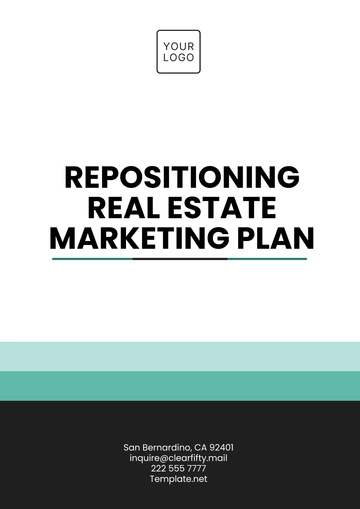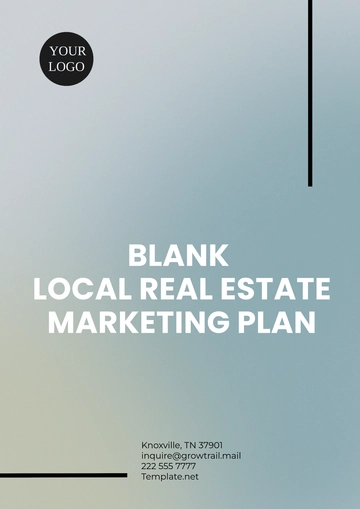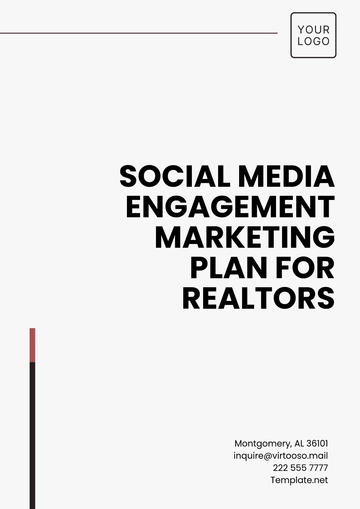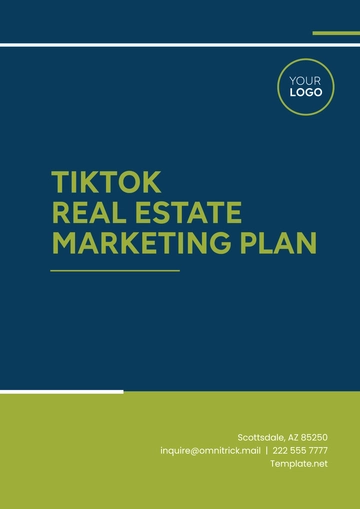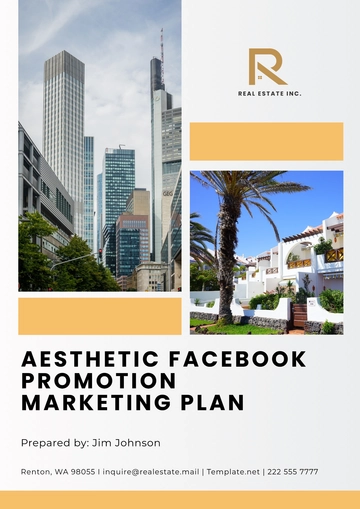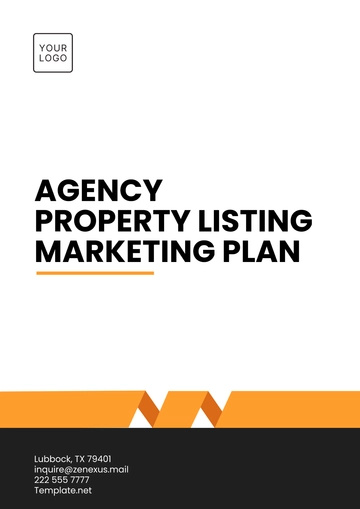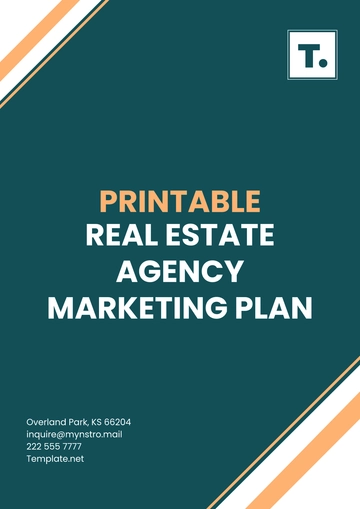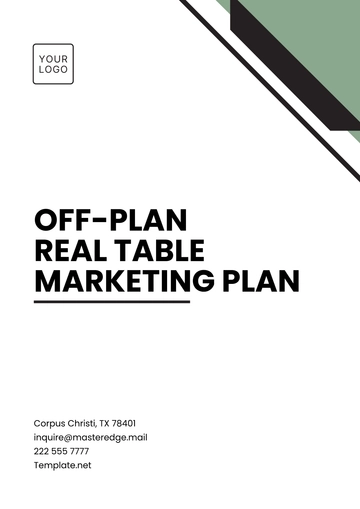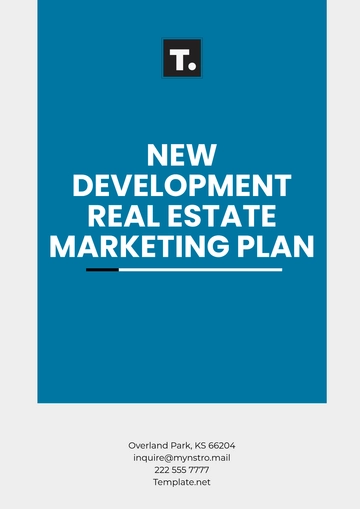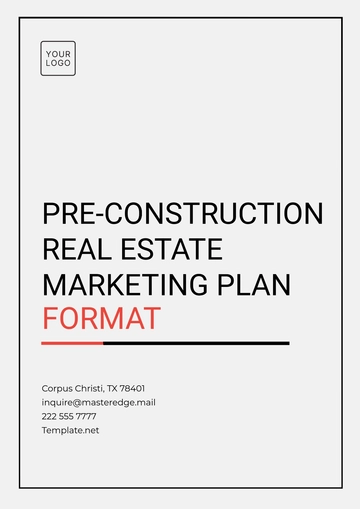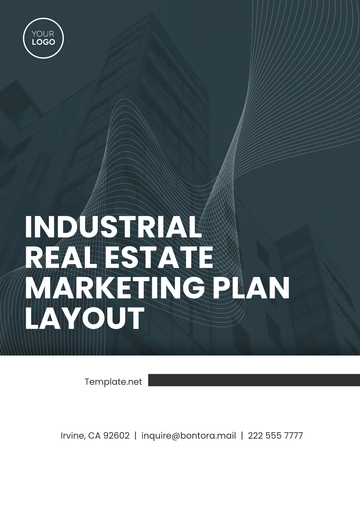Free Car Rental Marketing Plan
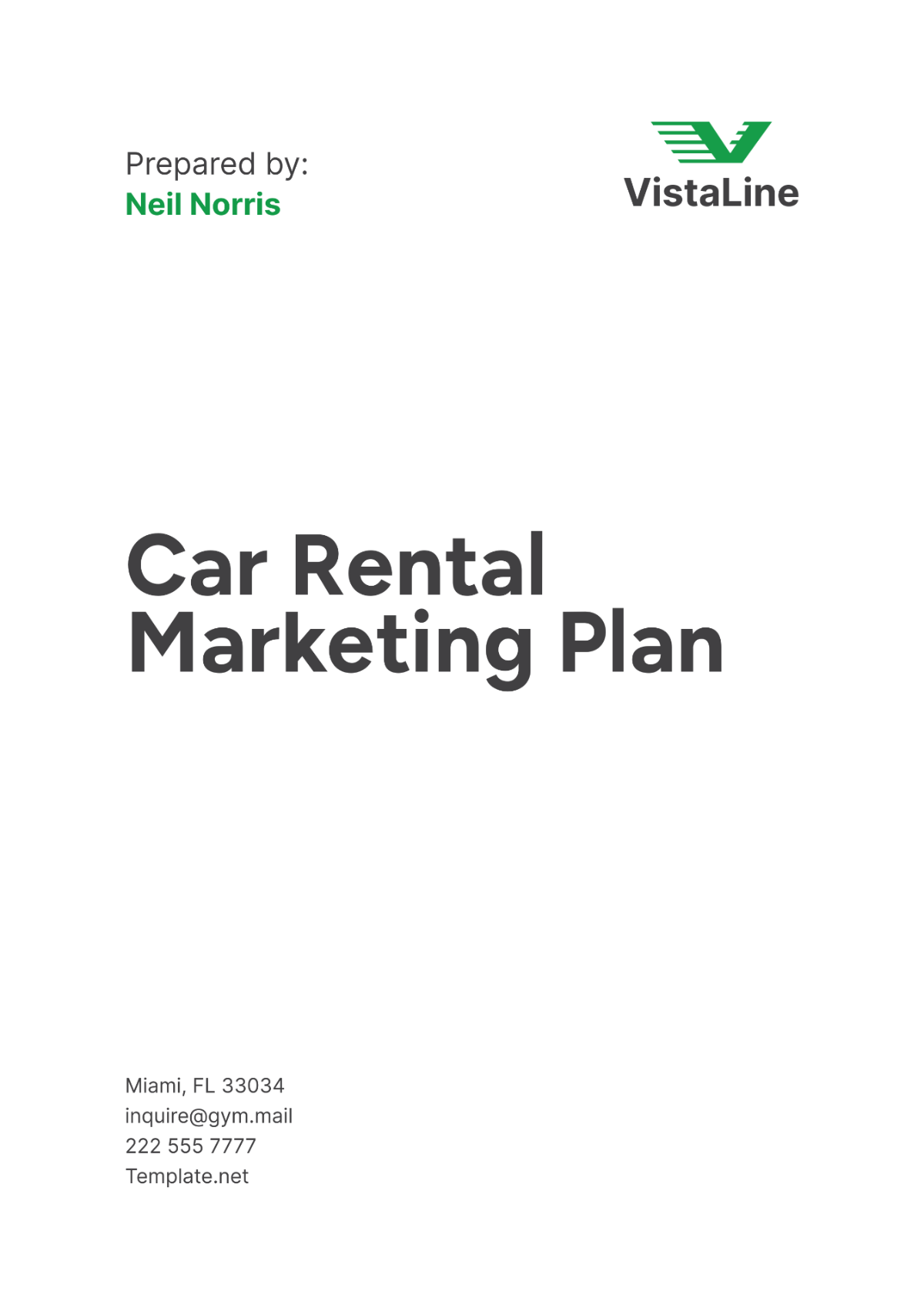
I. Executive Summary
[Your Company Name] is a leading car rental business focused on providing exceptional service and quality vehicles to our customers. This marketing plan outlines our strategies to enhance brand visibility, attract new customers, and increase revenue over the next fiscal year, 2053. This plan is structured to address various aspects of our marketing efforts, from market analysis to specific promotional activities.
In the past fiscal year, our revenue reached $5,000,000, with a steady growth rate of 8% annually. We aim to increase this growth rate to 12% through targeted marketing campaigns, strategic partnerships, and enhanced customer loyalty programs. Key financial targets include increasing the average rental period by 15% and boosting the customer retention rate by 20%.
This marketing plan will guide our efforts in optimizing our marketing budget, currently set at $500,000 for the upcoming year. By leveraging digital marketing, improving our service offerings, and expanding our customer base, we are confident in achieving our financial and operational goals.
II. Market Analysis
A. Industry Overview
Current Trends: The car rental industry is experiencing significant growth due to increased travel and tourism. Advances in technology, such as mobile booking apps, are also enhancing customer convenience and satisfaction.
Market Size: The global car rental market is projected to reach $100,000,000,000 by 2055. This growth is driven by rising disposable incomes and the increasing popularity of rental services for both leisure and business travel.
Competitor Landscape: Major competitors in the market include Hertz, Avis, and Enterprise. Each competitor has a unique value proposition, such as premium service or competitive pricing, which we must consider in our strategic planning.
Regulatory Environment: The car rental industry is subject to various regulations, including safety standards, environmental regulations, and consumer protection laws. Compliance with these regulations is critical to maintaining our license to operate.
Understanding the current industry trends and competitive landscape is essential for positioning [Your Company Name] effectively in the market. This knowledge helps us identify opportunities for growth and areas where we can differentiate ourselves from competitors.
B. Target Market
Demographic Profile: Our primary target market includes individuals aged 25-45 with a moderate to high-income level. These customers are typically urban professionals, frequent travelers, and vacationers.
Geographic Focus: We focus on major metropolitan areas and popular tourist destinations. These locations offer high demand for rental services due to business travel, tourism, and local transportation needs.
Customer Preferences: Customers prioritize convenience, affordability, and a wide selection of vehicles. Offering flexible rental terms and easy booking processes are critical to meeting these preferences.
Segment Analysis: Key customer segments include business travelers, leisure travelers, and local residents. Each segment has distinct needs and preferences that we must address in our marketing strategies.
C. SWOT Analysis
The following table presents a SWOT analysis of [Your Company Name]:
Strengths | Weaknesses | Opportunities | Threats |
|---|---|---|---|
Strong Brand Recognition | Limited Geographic Presence | Expansion into New Markets | Intense Competition |
High-Quality Vehicle Fleet | High Operational Costs | Growth in Travel and Tourism | Regulatory Changes |
Excellent Customer Service | Dependence on Seasonal Demand | Technological Advancements | Economic Fluctuations |
Strengths: Our strong brand recognition and high-quality vehicle fleet are significant advantages. These strengths position us well to attract and retain customers. Our excellent customer service further enhances our reputation and customer loyalty.
Weaknesses: Our limited geographic presence and high operational costs are areas for improvement. Expanding into new markets and optimizing our cost structure are essential steps to address these weaknesses.
Opportunities: The growing travel and tourism industry presents significant opportunities for expansion. Additionally, advancements in technology, such as online booking and mobile apps, can improve customer experience and operational efficiency.
Threats: Intense competition and regulatory changes are potential threats to our business. We must stay vigilant and adapt our strategies to mitigate these risks.
A comprehensive SWOT analysis helps us understand our internal strengths and weaknesses, as well as external opportunities and threats. This analysis is critical for strategic planning and decision-making.
III. Marketing Objectives
A. Increase Brand Awareness
Social Media Campaigns: Launch targeted social media campaigns to increase brand visibility and engagement. Use platforms like Facebook, Instagram, and Twitter to reach a wider audience.
Content Marketing: Develop high-quality content, such as blogs and videos, to educate customers and showcase our services. Content marketing helps build trust and authority in the industry.
Partnerships: Partner with travel agencies, hotels, and airlines to cross-promote services. Strategic partnerships can help us reach new customer segments and enhance brand recognition.
Public Relations: Implement a robust public relations strategy to generate positive media coverage. PR efforts can improve our brand image and attract more customers.
B. Enhance Customer Acquisition
Search Engine Optimization (SEO): Optimize our website for search engines to increase organic traffic. SEO helps potential customers find our services easily online.
Pay-Per-Click (PPC) Advertising: Invest in PPC advertising to drive targeted traffic to our website. PPC campaigns can generate immediate results and attract high-intent customers.
Email Marketing: Implement targeted email marketing campaigns to nurture leads and convert them into customers. Personalized email content can increase engagement and conversions.
Referral Program: Launch a referral program to incentivize existing customers to refer new ones. Referral programs leverage word-of-mouth marketing and can drive significant growth.
C. Improve Customer Retention
Loyalty Programs: Develop a loyalty program to reward repeat customers. Loyalty programs can increase customer satisfaction and encourage repeat business.
Customer Feedback: Collect and analyze customer feedback to improve our services. Understanding customer needs and preferences helps us enhance their experience.
Personalized Offers: Use customer data to create personalized offers and promotions. Personalized marketing can increase customer engagement and loyalty.
Regular Communication: Maintain regular communication with customers through newsletters and updates. Keeping customers informed about new services and promotions helps maintain their interest and loyalty.
IV. Marketing Strategies
A. Digital Marketing
The following table details our digital marketing strategies:
Strategy | Budget | Expected ROI |
|---|---|---|
Social Media Advertising | $100,000 | 150% |
Content Marketing | $50,000 | 120% |
SEO | $75,000 | 200% |
PPC Advertising | $100,000 | 180% |
Social Media Advertising: With a budget of $100,000, we expect a 150% ROI from our social media advertising efforts. Social media platforms offer extensive reach and targeting capabilities, making them ideal for brand awareness and customer acquisition.
Content Marketing: Allocating $50,000 to content marketing is projected to yield a 120% ROI. High-quality content can drive organic traffic, build brand authority, and engage potential customers.
SEO: Investing $75,000 in SEO is expected to generate a 200% ROI. Optimizing our website for search engines can significantly increase organic traffic and attract high-intent customers.
PPC Advertising: A $100,000 investment in PPC advertising is projected to deliver a 180% ROI. PPC campaigns provide immediate visibility and can drive targeted traffic to our website.
Effective digital marketing strategies are essential for reaching and engaging our target audience. By investing in social media advertising, content marketing, SEO, and PPC advertising, we can maximize our online presence and achieve our marketing objectives.
B. Traditional Marketing
Print Advertising: Utilize print advertising in travel magazines and local newspapers to reach potential customers. Print media can enhance brand visibility and attract local customers.
Billboards: Invest in billboard advertising in high-traffic areas to increase brand awareness. Billboards provide broad exposure and can attract attention from a large audience.
Event Sponsorships: Sponsor local events and trade shows to promote our brand. Event sponsorships offer opportunities to engage with potential customers and build community relationships.
Direct Mail: Implement direct mail campaigns to reach potential customers in targeted areas. Direct mail can be an effective way to promote special offers and new services.
C. Partnership Marketing
Travel Agencies: Partner with travel agencies to offer package deals and promotions. Travel agencies can help us reach a broader audience and attract travelers.
Hotels: Collaborate with hotels to provide exclusive offers for their guests. Hotel partnerships can drive business from travelers seeking convenient transportation options.
Airlines: Work with airlines to offer bundled travel and rental car packages. Airline partnerships can attract customers looking for comprehensive travel solutions.
Corporate Accounts: Establish corporate accounts with local businesses to provide rental services for their employees. Corporate partnerships can drive steady business from corporate travelers.
D. Customer Engagement
Loyalty Programs: Implement loyalty programs to reward repeat customers and encourage loyalty. Offering exclusive discounts and benefits can increase customer retention.
Customer Surveys: Conduct regular customer surveys to gather feedback and improve our services. Understanding customer needs and preferences helps us enhance their experience.
Social Media Interaction: Engage with customers on social media platforms to build relationships and foster community. Social media interaction helps maintain customer interest and loyalty.
Promotional Events: Host promotional events and contests to engage customers and create buzz. Events and contests can generate excitement and attract new customers.
V. Budget Allocation
The following chart and table provide the overview of our marketing budget allocation:
Marketing Activity | Budget | Percentage |
|---|---|---|
Digital Marketing | $325,000 | 65% |
Traditional Marketing | $100,000 | 20% |
Partnership Marketing | $50,000 | 10% |
Customer Engagement | $25,000 | 5% |
Total | $500,000 | 100% |
A. Digital Marketing
We have allocated $325,000 (65%) of our budget to digital marketing. This significant investment reflects the importance of online channels in reaching our target audience and achieving our marketing objectives.
B. Traditional Marketing
Traditional marketing activities will receive $100,000 (20%) of the budget. Print advertising, billboards, and event sponsorships remain valuable for local brand visibility and engagement.
C. Partnership Marketing
With $50,000 (10%) allocated, partnership marketing efforts will focus on strategic collaborations with travel agencies, hotels, airlines, and local businesses to expand our reach and customer base.
D. Customer Engagement
A budget of $25,000 (5%) is dedicated to customer engagement activities, including loyalty programs, customer surveys, social media interaction, and promotional events.
A well-balanced budget allocation ensures that we invest in the most effective marketing activities. By prioritizing digital marketing and strategic partnerships, we can maximize our reach and impact.
VI. Sales Strategy
A. Sales Channels
Online Booking: Enhance our online booking system to provide a seamless user experience. A user-friendly booking platform can increase conversions and customer satisfaction.
Mobile App: Develop a mobile app to offer convenient booking and rental management. A mobile app caters to the growing number of mobile users and enhances customer experience.
In-Store Sales: Improve our in-store sales process to ensure efficient and personalized service. Enhancing in-store sales helps maintain high customer satisfaction and loyalty.
Call Center: Upgrade our call center capabilities to handle inquiries and bookings effectively. A responsive call center supports customer needs and enhances their experience.
B. Sales Promotions
Seasonal Discounts: Offer seasonal discounts to attract customers during peak travel periods. Seasonal promotions can boost sales and increase market share.
Bundle Offers: Create bundle offers that include additional services, such as insurance and GPS. Bundled services provide added value and convenience for customers.
Referral Incentives: Implement referral incentives to encourage existing customers to refer new ones. Referral incentives leverage word-of-mouth marketing to drive growth.
Membership Benefits: Develop membership programs with exclusive benefits and discounts. Membership programs foster customer loyalty and repeat business.
C. Customer Service Excellence
Training Programs: Provide comprehensive training programs for staff to ensure excellent customer service. Well-trained staff enhance customer satisfaction and loyalty.
Feedback Systems: Implement feedback systems to gather customer insights and improve service. Understanding customer feedback helps us enhance their experience.
24/7 Support: Offer 24/7 customer support to assist with inquiries and issues. Round-the-clock support ensures customer needs are met promptly.
Personalized Service: Deliver personalized service to meet individual customer needs. Personalization improves customer experience and fosters loyalty.
VII. Performance Metrics
A. Key Performance Indicators (KPIs)
Customer Acquisition Cost (CAC): Measure the cost of acquiring new customers to evaluate marketing efficiency. A lower CAC indicates more effective marketing strategies.
Customer Lifetime Value (CLV): Calculate the average revenue generated per customer over their lifetime. A higher CLV reflects strong customer retention and profitability.
Conversion Rate: Track the percentage of visitors who become customers. A higher conversion rate indicates successful marketing and sales efforts.
Return on Investment (ROI): Assess the profitability of marketing activities by calculating ROI. A higher ROI demonstrates effective use of marketing budget.
B. Customer Metrics
Customer Satisfaction Score (CSAT): Measure customer satisfaction through surveys and feedback. High CSAT scores indicate positive customer experiences.
Net Promoter Score (NPS): Track customer loyalty and likelihood to recommend our services. A high NPS reflects strong customer loyalty and positive word-of-mouth.
Retention Rate: Monitor the percentage of customers who return for repeat rentals. A higher retention rate indicates successful customer retention strategies.
Churn Rate: Calculate the percentage of customers who stop using our services. A lower churn rate indicates strong customer satisfaction and retention.
C. Sales Metrics
Revenue Growth: Track the increase in revenue over time to measure business growth. Consistent revenue growth indicates successful marketing and sales efforts.
Average Rental Value: Calculate the average value of each rental transaction. A higher average rental value reflects successful upselling and bundling strategies.
Rental Frequency: Monitor the average number of rentals per customer. Higher rental frequency indicates strong customer loyalty and repeat business.
Market Share: Measure our market share within the car rental industry. Increasing market share indicates successful competitive positioning and growth.
VIII. Implementation Timeline
The following table outlines our implementation timeline for key marketing activities:
Phase | Activities | Timeline |
|---|---|---|
Phase 1 | Digital Marketing Launch | Q1 |
Phase 2 | Traditional Marketing Initiation | Q2 |
Phase 3 | Partnership Development | Q3 |
Phase 4 | Customer Engagement Programs | Q4 |
Phase 5 | Performance Evaluation | End of Year |
A. Phase 1: Digital Marketing Launch
In Q1, we will launch our digital marketing initiatives, including social media campaigns, content marketing, SEO, and PPC advertising. This phase aims to build online presence and drive customer acquisition early in the year.
B. Phase 2: Traditional Marketing Initiation
In Q2, we will implement traditional marketing activities such as print advertising, billboards, and event sponsorships. These efforts will complement our digital marketing and enhance local brand visibility.
C. Phase 3: Partnership Development
In Q3, we will focus on developing strategic partnerships with travel agencies, hotels, airlines, and local businesses. Partnerships will help expand our reach and attract new customer segments.
D. Phase 4: Customer Engagement Programs
In Q4, we will launch customer engagement programs, including loyalty programs, customer surveys, social media interaction, and promotional events. These initiatives aim to enhance customer retention and satisfaction.
E. Phase 5: Performance Evaluation
At the end of the year, we will evaluate the performance of our marketing activities based on key performance metrics. This evaluation will inform adjustments and improvements for the following year.
A phased approach ensures systematic implementation and allows us to measure progress and make necessary adjustments at each stage. By aligning activities with specific timelines, we can achieve our marketing objectives efficiently.
IX. Conclusion and Next Steps
A. Conclusion
This Marketing Plan of [Your Company Name] outlines comprehensive strategies to enhance brand visibility, attract new customers, and increase revenue for year 2053. By leveraging digital marketing, traditional marketing, strategic partnerships, and customer engagement programs, we aim to achieve a 12% growth rate and reach our financial targets.
Regular performance evaluations and adjustments based on key metrics will ensure the effectiveness of our marketing efforts. Our commitment to providing exceptional service, high-quality vehicles, and a seamless rental experience will continue to drive customer satisfaction and loyalty.
B. Next Steps
To successfully implement this marketing plan, the following steps will be undertaken:
Initiate Digital Marketing Campaigns: Launch social media, content marketing, SEO, and PPC campaigns in Q1.
Implement Traditional Marketing Activities: Roll out print advertising, billboards, and event sponsorships in Q2.
Develop Strategic Partnerships: Establish collaborations with travel agencies, hotels, airlines, and local businesses in Q3.
Launch Customer Engagement Programs: Introduce loyalty programs, customer surveys, social media interaction, and promotional events in Q4.
Evaluate Performance Metrics: Conduct year-end performance evaluations to measure the success of our marketing activities and inform future strategies.
By following these steps, [Your Company Name] will effectively execute the marketing plan and achieve our business goals. Our ongoing dedication to excellence and customer satisfaction will ensure continued growth and success in the competitive car rental industry.
- 100% Customizable, free editor
- Access 1 Million+ Templates, photo’s & graphics
- Download or share as a template
- Click and replace photos, graphics, text, backgrounds
- Resize, crop, AI write & more
- Access advanced editor
Create a comprehensive marketing plan with the Car Rental Marketing Plan Template! Only available here on Template.net, this template is customizable to fit your marketing objectives. The editable format allows for easy adjustments. The AI Editor Tool aids in drafting a detailed and effective marketing plan enhancing your promotional efforts!

